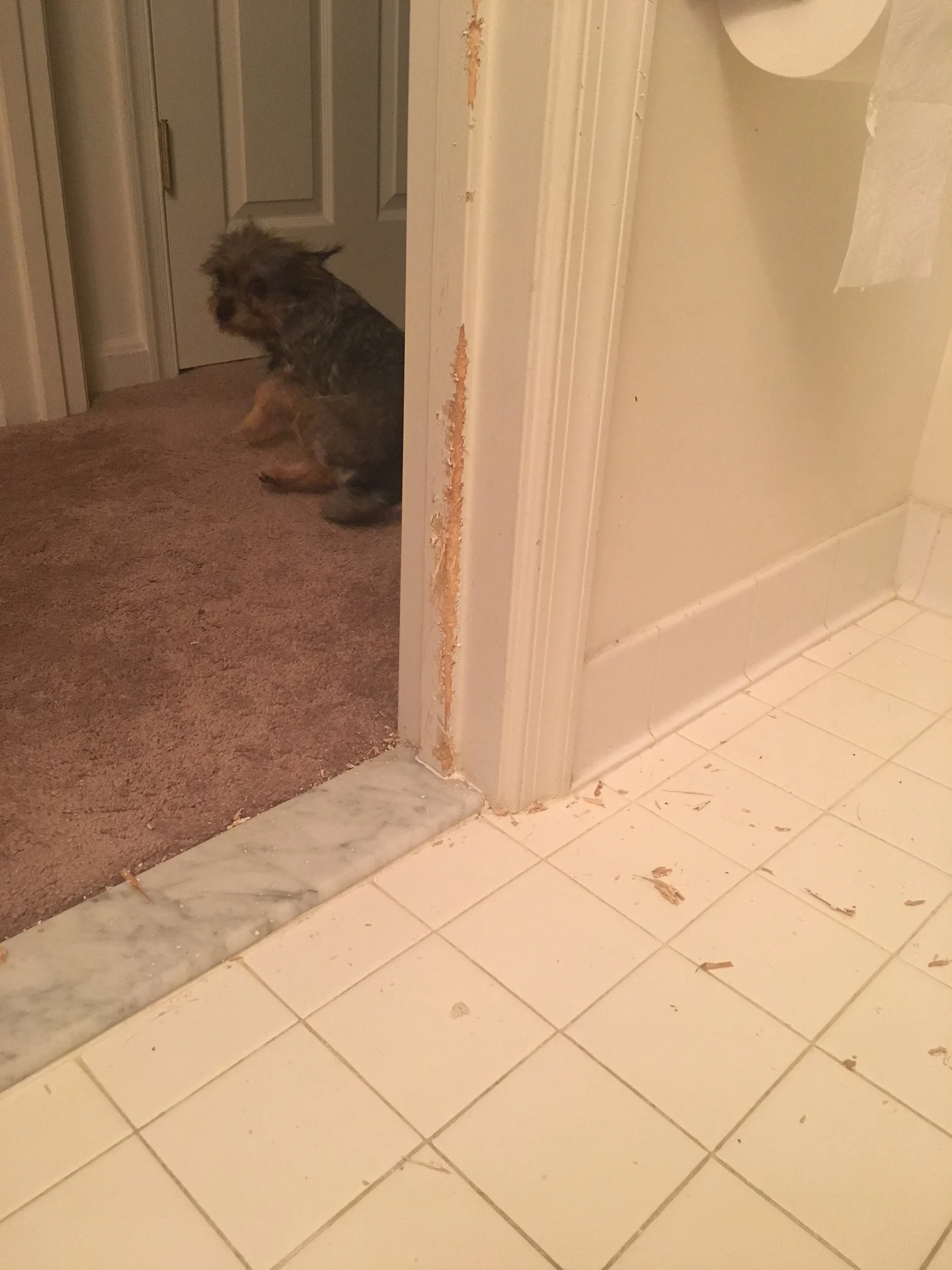This response is incorrect. See below for the correct answer.
Separation Anxiety in a Dog With Fear-Based Behavior
Leslie Sinn, CPDT-KA, DVM, DACVB, Behavior Solutions, Ashburn, Virginia

A 6-year-old spayed terrier crossbreed is presented for a 2-month history of crying and barking when left at home alone. The behavior began 2 weeks after the patient was adopted from a local animal shelter. She becomes increasingly agitated (eg, panting, whining, following her owners) when her owners prepare to leave the home; when the owners return, she exuberantly greets them, engaging in marked attention-seeking behaviors (eg, standing on hindlimbs, frantically pawing at the owners) and requiring at least 15 minutes to settle.
The owners provide a video of the patient vocalizing when crated (see Video) and report that she pants, paces, vocalizes, and chews and paws at doors and window frames when not crated (Figure). These behaviors continue for the duration of the owners' absence. The owners have crated the dog, offered long-lasting chews before departures, and used verbal reprimands, none of which have impacted her behavior. The dog does not have a history of aggression toward humans or other animals.
No abnormalities are observed on physical examination. CBC, serum chemistry profile, total thyroxine, and urinalysis are unremarkable. On examination, the patient is visibly trembling, refuses food, and remains crouched on the owner’s lap with ears down, tail tucked, and eyes averted. To avoid exacerbating her fearful response to handling, temperature is not obtained.
Diagnoses of separation anxiety and fear-based behaviors in the veterinary setting are made.

The patient damages door frames when not crated during owner absence.